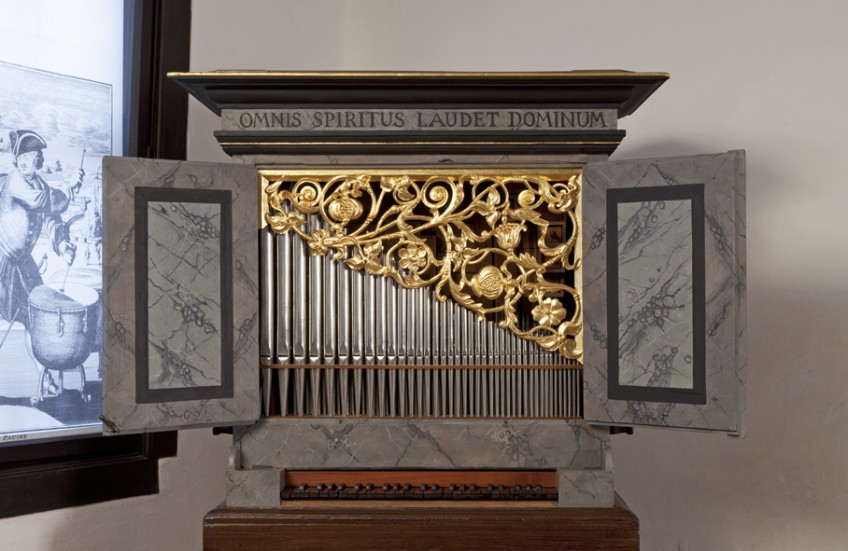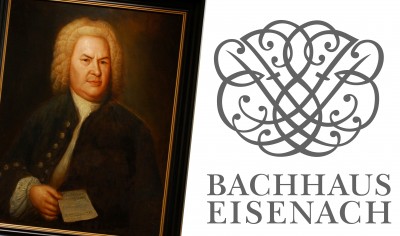
Thuringian house organ, ca. 1650, concert room of the historic Bach House. Photo: Constantin Beyer.
Instrument collection
The Bach House houses a collection of nearly 900 historical musical instruments. Four of these, including a fretted clavichord dating from around 1690, were donated to the Bach House by the Leipzig collector and music dealer Paul de Wit upon its opening in 1907. The collection received a significant addition in 1910 with the donation of Aloys Obrist’s collection of 154 instruments. Another significant donation of 468 historical wind instruments followed in 2024 by the collector Günter Hett.
The concert room in the historic Bach House displays 29 Baroque instruments used by Bach in his works. These include a Thuringian house organ dating from 1650, a spinet by Johann Heinrich Silbermann (1765), a seven-stringed viola da gamba (Leipzig 1725, built by the instrument maker Johann Christian Hoffmann who was a friend of Bach’s), a five-stringed violoncello piccolo (North Bohemia, ca. 1750), and a viola d’amore with six playing strings and six resonating strings (Vienna, ca. 1700). Every hour, there is a short concert on five historical keyboard instruments (included in the admission price), true to the motto of long-time Bachhaus director Conrad Freyse: “In the Bachhaus, music must never be silent”.
The Marc Aurel Hett Hall in the new building tells the story of the development of wind instruments through 147 additional instruments. The technology-loving 19th century brought enormous changes to almost all previously common musical instruments: brass instruments through the invention of the valve, woodwind instruments through sophisticated key systems that allowed clean playing in every key. New instruments such as the tuba and saxophone were added, while others such as the bass horn, ophicleide, and cornet enjoyed only temporary success. This part of the exhibition is not part of the tour; those interested are asked to enquire at the reception. A guided tour of the hall takes place every Sunday at 3 p.m. (included in the admission price).
Numerous other musical instruments, such as a Thuringian harpsichord from 1715, a harpsichord by Jacob Hartmann (1765) or a pedal clavichord from around 1815, are stored in the museum magazine, which can be made accessible to guided study groups by prior arrangement

Marc Aurel Hett Hall in the modern part of the museum. Photo: André Nestler.
